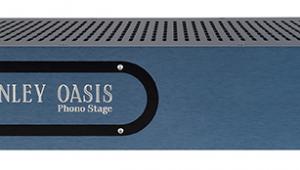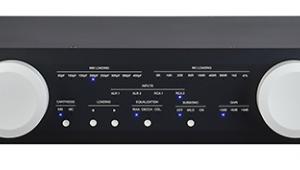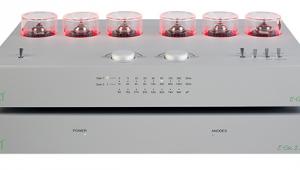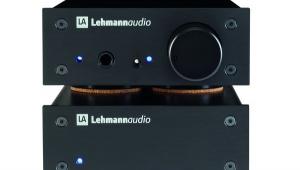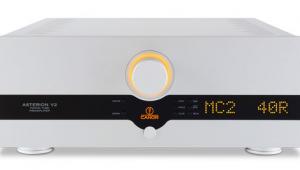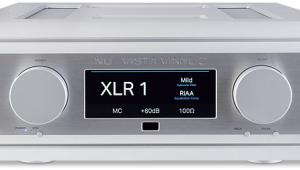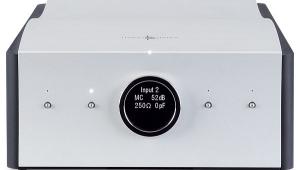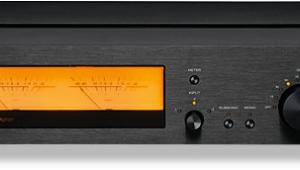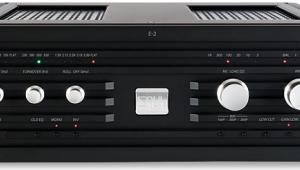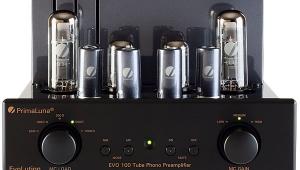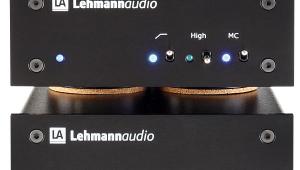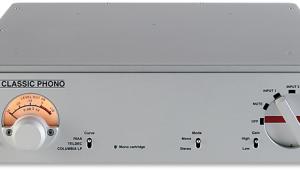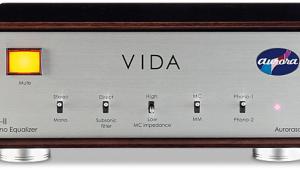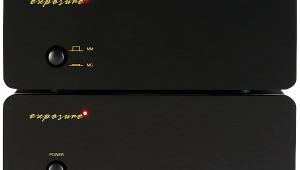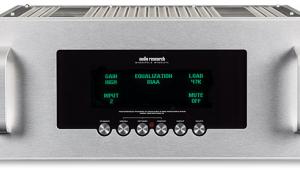Nad Pp 2 (£50)
It was something of a surprise to open NAD’s substantially sized packing box to find the PP 2 is only 135 x 35 x 70mm (whd). The review sample came in a dark grey metal enclosure but a lighter ‘Titanium’ finish is available too (see picture).
All you have to do is connect tonearm leads either to the MM or MC pair of labelled rear RCA phono input sockets, and switch accordingly, attach the arm earth lead to a screw terminal and plug in the ‘wall-wart’ mains transformer. Mains-on is indicated by a small green front-panel LED. The amplified and RIAA-corrected signal is fed out to the system preamplifier, again via L/R phono sockets.
The ’2 is an improved version of NAD’s PP 1. Better metal film resistors and film type capacitors and closer toleranced components, plus an increased power supply voltage, have resulted in a more refined and engaging listening experience, says NAD.
If you have been reading the magazine over the past few issues you’ll know that, in May ’07, we reviewed a state-of-the-art phono preamplifier by PS Audio, the GCPH. Its performance even overshadowed Ken Kessler’s group test findings in September ’07 too.
But that unit costs £799 so you could hardly expect its facilities (switchable loadings, stepped gain settings plus a variable output, so it can provide a direct feed to a power amplifier) duplicated here for one-sixteenth of the cost.
GOOD FOR JAZZ
The PP 2 improves noticeably when the electronics are warmed and settled in. Negligible in consumption it may be left powered. But even from cold, the excellent timing of this product was evident – and this made it particularly good for old jazz classics. The Ellington material recorded in the 1940s, also mentioned in this month’s Super System review, even sounded convincingly ‘stereophonic’.
The words were clear with Rickie Lee Jones’ ‘Easy Money’, and double-bass focus was good. All of the LPs I sampled tempted me into enjoying much longer extracts than I would have anticipated from such a modestly priced product.
With classical music recordings, reverting to my own DNM MC input for A–B comparisons was like opening a window – wider dynamics, subtler tone colours, etc. And so it should be (the phono stage boards alone cost £800+)!
With the St Martin’s Academy Rossini String Sonatas on Argo, the low-frequency background, distant noises from passing cars, etc, separated out less well with the PP 2 – they might have been mistaken for pressing rumble – and when the dynamics were very high the sound tended to close in. This strain was audible too on the Sibelius Fourth Symphony on Philips [see also page 70], with full orchestra playing crescendos to forte.
To keep this in perspective, the fine DG Stravinsky Soldier’s Tale with the Boston Chamber Players, and actors Gielgud and Courtenay, sounded crisp, the music well defined rhythmically and the narrative dramatically absorbing.
Stereo separation was generally good and surface clicks were not distracting. Nor, incidentally, were there any hum problems with the PP 2. I did find, though, with the Stones’ hits ‘All Sold Out’ and ‘I Am Waiting’, on Teldec, the exaggerated channel separation precluded a centred cohesive image.
VERDICT
This inexpensive little preamplifier will seem a gift to someone newly exploring the pleasures of analogue replay on a tight budget. It offers a much larger slice of the audiophile cake than anyone could reasonably expect and is enthusiastically recommended. How does NAD do it for the price?
Originally reviewed in the January 2008 issue


